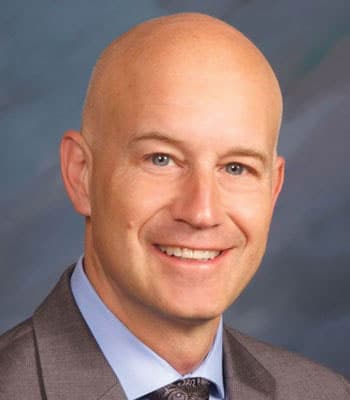CEO Roundtable: Health care execs look to challenges beyond pandemic
BOULDER — With the COVID-19 pandemic in the rear-view mirror, health care executives are dealing with challenges such as continuing to integrate digital technology into medicine, the rising importance of mental health care and a growing labor crisis that could impact the ability of health care providers to hire an adequate workforce.
That was the message Tuesday out of BizWest’s health care and insurance CEO Roundtable hosted by Berg Hill Greenleaf Ruscitti LLP and sponsored by Plante Moran and Bank of Colorado.
At this point, hospitals and other health care providers have moved on to treating COVID-19 like any other virus that exists in the community.
“We’ve moved into a phase of managing it like other endemic viruses,” said Robert Vissers, president and CEO of Boulder Community Health.
Vissers said BCH has had no deaths from the virus since February and currently has more flu patients than coronavirus patients.
Lonnie Cramer, president of UCHealth Longs Peak Hospital and Broomfield Hospital, concurred.
“The crisis is over,” Cramer said. “We still see admitted patients [with COVID], but for the most part, the severity level of treatment is down. We’re not seeing as many admissions … It’s just a part of who we are today.”
Clint Flanagan, founder and CEO of primary care provider Nextera Healthcare, said that from a primary care perspective, Nextera sees “much less” cases than it used to.
But while that crisis may be over, the tailwinds of the pandemic are bringing new challenges with which providers still have to grapple. One of those is the increasing prevalence of telehealth, which provides new opportunities but also has its limitations.
“It’s a silver lining of the pandemic,” Cramer said. “We’re seeing it across the board in all disciplines. During the peak of the pandemic, we had 4,500 telehealth visits per day. Before that, it was about 100. Now it’s around 1,500.”
Vissers said BCH was fortunate to have made big investments in virtual technology in 2019 before the pandemic began, so it was able to hit the ground running when telehealth became the main way patients communicated with their doctors.
“We had the tools and capability, but it required a cultural shift on our part and the part of our patients,” Vissers said. “It gave us an insight into how it can be used much more broadly. It just started to move to the frontier of what you can do with telehealth.”
As an example, Vissers cited surgeries conducted remotely with a surgeon operating a robot through a video screen. However, it doesn’t solve everything. Imaging, blood draws, physical therapy and other practices have to be conducted in-person.
“It’s not a panacea,” Vissers said.
The transition to telehealth can also be difficult for smaller health care providers. Savita Ginde, CEO of the Boulder Valley Women’s Health Center, said that presented a challenge for her organization.
“Being such a small organization, we struggle with the bandwidth and infrastructure required to pull off telehealth,” Ginde said. “It has become a part of our services, but we still do a majority in person.”
It’s also a mixed bag in the mental-health space, said Jennifer Leosz, co-CEO of Mental Health Partners. While being able to connect remotely with a therapist was a fantastic option for many patients, she said, others are better served by in-person therapy.
“There was a lot of delayed care [during the pandemic],” Leosz said. “We’re trying to match the needs of our clients.”
Leosz said the stigma around dealing with mental-health problems has decreased, but the options of care available to patients are still lacking, and those that do exist are underfunded.
Providers across the board are attempting to improve the mental health treatments they offer and make them more accessible. Cramer said. UCHealth is preparing to launch a ketamine therapy program. Flanagan said Nextera treats mental health as a regular part of primary care.
“We prefer to help care for people before it reaches a crisis point,” Flanagan said.”
Greg Berman, executive medical director of operations for Kaiser Permanente, said Kaiser trains all of its providers to look after patients’ mental health. He cited as an example a patient who during a dermatologist visit was found to have suicidal ideation and immediately put in touch with a mental-health crisis professional.
One of the big barriers to providing the mental health care that patients need is the lack of employees, Berman said.
“The demand is there, and the supply is not,” Berman said.
That extends to every sector of health care, and it is shaping up to be a massive crisis for the industry. Vissers said it could be a bigger disruption than the pandemic.
Said Berman: “The pandemic has caused a reckoning where people are rethinking their lives.”
People are more interested than ever in working remotely and having a flexible schedule. Cathy Higgins, CEO of BoulderCentre for Orthopedics, said that presents a challenge when so much health care work must be conducted in person.
“We spend a lot of time working on culture and making it a place they want to be,” Higgins said. “We are constantly recruiting front desk and medical assistants.”
In addition to the necessity of in-person care, many medical offices have fixed hours and require their employees to work 8 a.m. to 5 p.m., Monday through Friday. In the case of hospitals, they may have to work nights and weekends. Flexibility is not as much of an option.
“For us, having to meet some of the wages that competitors pay, on top of people who want flexibility in hours, makes it really challenging,” Ginde said.
Now that other industries can offer those benefits, health care companies are having to compete on somewhat of an uneven playing field.
“With the remote work trend, it’s really a challenge because all of our work can’t be remote,” Leosz said. “The workforce flexibility is making people more willing to leave. It’s driving people to different industries.”
Attracting people to health care is a challenge that companies are just beginning to tackle.
“We can do a much better job at an earlier age to get these people on a health care career trajectory,” said Scott Sternberg, executive director of the Boulder Economic Council.
To that end, Cramer said UCHealth has been working to start a health club in the St. Vrain Valley School District for high school juniors and seniors who are interested in health care careers. But it’s an uphill battle.
“This is now a math problem,” Vissers said. “In the end it’s going to drive some transformation in health care.”
Also attending were sponsors Ashley Cawthorn, Berg Hill Greenleaf Ruscitti LLP; Aaron Spear, Bank of Colorado; and Ryan Sells, Plante Moran.
Source: BizWest




